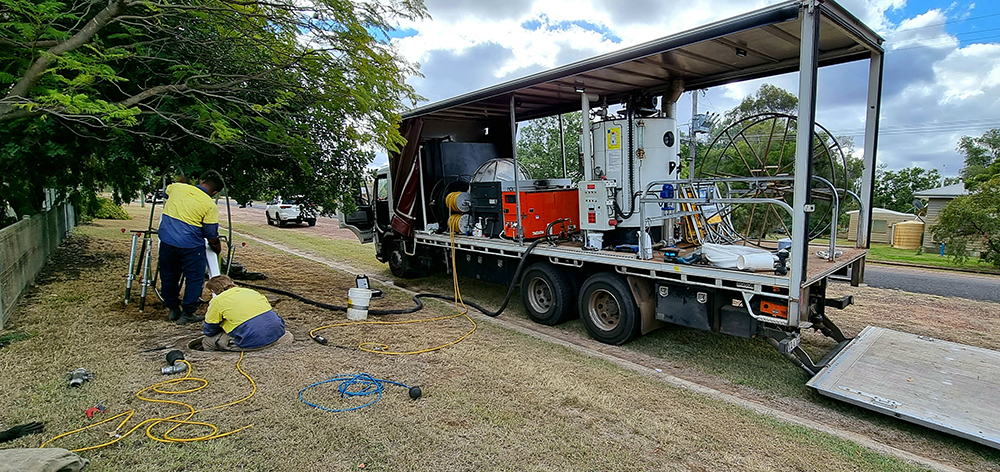The Silver Lining in FNQ Sewers

The Far North Queensland Regional Organisation of Councils (FNQROC) have found a silver lining in their sewers through a joint sewer relining program that has led to considerable savings for FNQ communities.
According to FNQROC Regional Procurement Coordinator Amanda Hancock, all participating Councils undertake annual in-situ sewer relining works to maintain the sewer reticulation network but combining their efforts have led to much better coordination of works between all stakeholders.
“The joint procurement strategy aims to ensure the structural integrity of the sewer mains by protective relining of the sewer system,” Amanda said.
“This extends the life of the asset and can also result in a substantial reduction in flow to the sewage treatment facilities and overall energy reduction, especially during the wet season or rain events, due to relining reducing infiltration in the lines.”
Amanda says the joint program was broken into three parts or packages of works, two with a construction focus and one as a service.
“Parts one and two focused on the actual sewer relining according to the size of the pipes – sewers lower than 250mm and those 250mm and above. Participating Councils included Cairns, Cassowary, Mareeba and Tablelands Regional Council.”
“Douglas Shire Council also participated in Part 3, which involved sewer and manhole condition assessments of all sewer networks.”
The joint procurement strategy provided economies of scale for Councils, but also for the winning tenderers, Relining Solutions and Flow Pro.
“Combining our efforts makes it easier for councils and suppliers to deliver the programs as they are not competing against each other for a resource,” Amanda explains.
“It allows contractors to move around if they are constrained by weather, and it eases communication because suppliers by liaising with one person instead of four different councils. In short, it makes it easier to do business with us.”
While considerable cost savings provided tangible benefits, Amanda is keen to highlight the intangible benefits as well.
Part of funding provided by QWRAP funded a Program Coordinator role which provided contract certainty to all stakeholders. It also meant only one person needed to review the CCTV footage, taking away a big responsibility from the individual councils.
The program also allowed participating councils to stay abreast of emerging technologies such as Artificial Intelligence (AI) for review of CCTV, and it provided a consistent platform to test new technologies as a group.
“The project has given us all a much better understanding of what we are doing in this space and allow us to respond quite quickly. We hope to see further investment in a consistent dataset to explain what we are doing in this area, and which can help us to secure future funding.”
Another benefit of joint procurement is that it allows the group to hold suppliers more accountable by tying bank guarantees to agreed dates as per the proposed program of works.
The annual program for 20-21 is now complete but Amanda says the group will continue to take learnings.
“The project was a great success, and the group was able to get the project completed by the end of the financial year, which is not always the case.”
“Through joint procurement, our suppliers have an opportunity to increase their capacity which is not the case if we provided bits of work here and there. It is challenging for contractors to organise their teams, and by working collaboratively we can make the contract work better for everyone involved.”